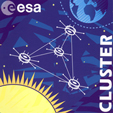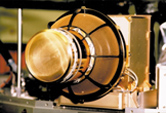The magnetopause is an example of a current sheet formed when two magnetized plasmas interact with each other. In the simplest physical picture, in which the magnetic fields are frozen into the plasma, the two interacting plasmas remain separate. Therefore the major interest is in those processes that violate the frozen flux condition and then lead to transfer of mass, momentum and energy across the current sheet.
Violation of the frozen flux theorem implies that the measured electric field differs from the convection electric field. Processes that lead to such deviations are expected to operate only on small spatial scales. In magnetic reconnection, for example, there is the diffusion region around the X- line which separates the regions of different magnetic field topology. But reconnection also implies the presence of non-zero electric fields tangential to the magnetopause over much larger scales. Because it is necessarily rather small (of the order of 1 mV/m), it has not been measured in the past except in a few cases. Thus the systematic measurement of the tangential field and its spatial scale remains one of the outstanding tasks of the Cluster mission.
As a consequence of the transfer processes, a boundary layer of solar wind plasma exists inside the magnetopause. The significance of the various portions of the boundary layer for the transport of magnetic flux, and thus for the cross-magnetotail potential, can be assessed from measurement of the electric potential across the layer. Previous estimates relied on single-spacecraft measurements which become highly suspect in the presence of boundary motions or non-stationary conditions. The availability of measurements on the four Cluster spacecraft will go a long way towards improving the accuracy of the potential measurement.
For the polar-cusp region, a major objective will be the study of plasma turbulence, because eddy diffusion or turbulent convection has been invoked as the dominant plasma transport mechanism in that region. Correlations between the four spacecraft will help to confirm or deny this type of transport.





